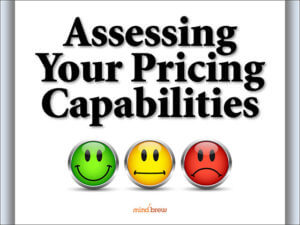Once upon a time, in land far too close to home, a new leader was hired into a successful business whose decades-long growth trajectory had recently stalled. As the board was looking for a “fresh perspective,” this new leader was recruited into the organization from a completely different industry.
Within just a few weeks, the new leader identified a number of long-standing procedures, processes, policies, and structures that “made no sense” and needed to be replaced or scrapped altogether. And over the next couple of quarters, the new leader managed to push most of these changes through.
An amazing turnaround story? Nope. The growth plateau turned into a death spiral that the company was never able to recover from.
As it happened, many of those “nonsensical” processes, procedures, and policies were borne out of tough lessons and were long-standing for very good reasons. But those reasons weren’t readily apparent to the new leader. Nor was the new leader all that interested in digging deeper. No, they were in a hurry to drive change and make their mark.
So they jumped to conclusions and changed things they didn’t fully understand. They thought they were clearing dead wood when in reality they were ripping out critical infrastructure. And the unintended consequences were devastating.
This case perfectly illustrates something G. K. Chesterton wrote about way back in 1929…
In discussing the rush to reform certain institutions and laws, Chesterton used a parable about encountering a fence crossing a road. One type of reformer, upon not immediately seeing the reasons and rationale for that fence, would be quick to tear it down and unleash all manner of unforeseen and unintended consequences. On the other hand, a more thoughtful type of reformer would avoid those negative potentialities by considering why the fence was erected in the first place.
The parable of Chesterton’s Fence simply suggests that you shouldn’t seek to tear things down until you fully understand why they were built.
This is a great principle to keep in mind while seeking to drive meaningful change in your organization’s pricing performance. The most obvious reason is illustrated in the case of the new leader described above—i.e. not destroying things that actually matter. By working to fully understand why particular processes, procedures, or policies are there in the first place, you’ll reduce the odds that the changes you are advocating will actually make things worse rather than better.
But there’s another reason Chesterton’s Fence is relevant to change management in B2B pricing functions today:
Exposing the “why” behind the status quo is often the key to getting others to recognize and decide for themselves that a change is indeed warranted.
In any business, it’s not unusual for certain processes, procedures, and policies to far outlive the conditions that drove their initial creation and implementation. These processes and policies can then become so engrained that no one even questions whether or not those conditions still exist.
But when you can show that the initial condition or problem no longer exists or has changed in some fundamental ways, it helps break the spell of the status quo and makes people much more receptive to change.
The bottom line is that to drive meaningful change in your pricing practice, you need to understand why the current stuff is the current stuff. In some cases, you’ll learn that the current stuff actually serves a more important function than you had imagined. In other cases, you’ll be able to reduce the resistance to change by highlighting how the originating conditions are now very different.
PS: Participate in the Chesterton Challenge by working the Chesterton Fence parable into your next cocktail party conversation. You’re welcome! 🙂
















